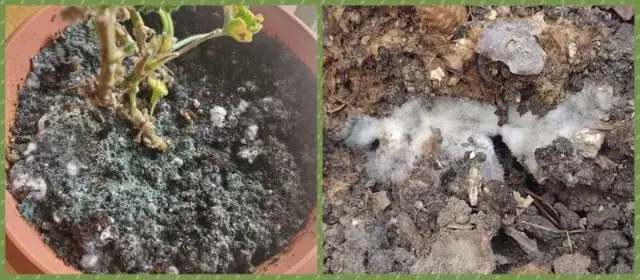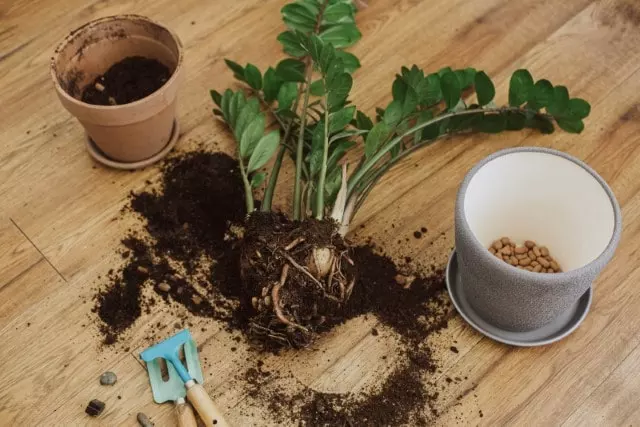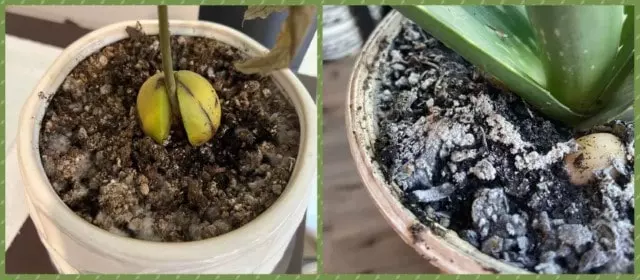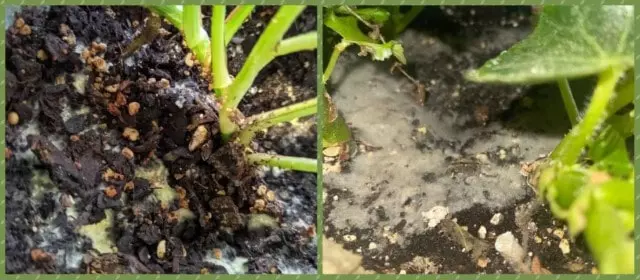The appearance of mold in plant soil is one of the most common growing problems in the winter months. Although mold usually appears mainly in indoor plants, it can also appear in those we have outside the house. The presence of mold in plant soil is usually a cause for concern and alarm, but fear not, it is very easy to get rid of mold in plant soil.
Before becoming alarmed, it is important to understand that the scary mold in plant soil is not always synonymous with a problem. Mold is simply the visual manifestation of a microscopic fungus found naturally in the environment. And, although it may be hard to believe, this tiny being is also part of the substrate of our plants.
It is important to know what are the reasons that cause the appearance of mold in plant soil. That is why here you will learn why mold appears in the plant soil and how to get rid of mold in the plant soil.
Table of Contents
What Is Houseplant Mold?
Mold is a tiny fungus that is part of the substrate of plants and is continuously present in the natural environment. However, its normal state is affected when environmental conditions become more humid and warmer. In these circumstances, the result is usually excessive growth, invading any surface.
Therefore, enclosed spaces with average temperatures, high condensation, and poor ventilation are the perfect setting for this fungus to develop. This explains why mold appears most frequently in bathrooms, basements, or indoor plants. Outdoor crops also tend to have this fungus, especially when leaf decay occurs, which promotes humidity. Don’t worry, getting rid of mold from the soil of the plants is very easy.
How to Identify and Avoid Mold in the Plant Soil
First, we must start by knowing how to identify mold in plant soil. And we say this because it is very common, even more than it seems, to confuse it with another common phenomenon in substrates. I would say that all gardeners have at one time or another encountered white spots in the plant soil, both in indoor and outdoor plants.
You will probably think that it is mold, but, before doing so, it is necessary to rule out if it is not lime or salt residues. Often, especially when watering with a watering can, the invisible components of the water accumulate on the soil. They usually create a whitish stain that starts out looking like fluff and, over time, hardens. If this is the case, you can remove it without further complication, and it will be salt or lime contained in the water used to irrigate the plants.
However, what happens when the white stains that are detected in the substrate are not lime or salt residues? In that case, you are dealing with mold in plant soil. Although molds, lime, and salt residues have a similar appearance, there are a couple of details that allow us to identify them without a doubt. The big difference is not in the color, which is practically the same, nor in the appearance. What makes it possible to identify the mold is undoubtedly how it is distributed throughout the substrate. While it can begin creating punctual groupings, as in the case of lime and salt residues; there will be no doubt that it is mold in plant soil if it begins to colonize the whole substrate. And not only that, but mold can also appear in the pot and even on the leaves.

How to Get Rid of Mold in Plant Soil
Getting rid of mold in plant soil is a simple task, but it depends on the area where the mold is generated. It is not the same if the mold is in the soil, on the leaves, or in the pot. For each space, it is recommended to take different actions to get rid of mold on the plant.
Repot the Plant to Get Rid of Mold in Plant
Repotting the plant to get rid of the mold in plant soil may be the quickest way to solve the mold problem. Throw away all old, contaminated soil (do not use it in compost, either). Use new, sterile soil, suitable for your plant and with good drainage, which will be essential to avoid mold in the soil.
Soak the pot in a bleach mixture (1 part bleach to 10 parts water) for 10 minutes to remove all traces of mold remaining in the pot. If the pot is too large to submerge, simply wipe the entire pot with the bleach mixture with a damp cloth several times.
Then make sure that no mold remains on the plant and repot with sterile soil. Make sure the pot has good drainage to prevent excess moisture and mold from returning. Maintaining proper watering will keep the mold from returning.

Remove the Mold from the Plant and Apply a Fungicide
The mold grows on the surface of the soil and can be easily removed with a small shovel or a spoon, carefully removing the mold from the surface soil. Then, if you see mold on the plant, you can remove the mold from the leaves with a damp cloth.
Once you no longer observe mold on the plant and soil, you should apply a fungicide to ensure the complete elimination of the mold. You can make your own homemade organic fungicide with potassium bicarbonate.
Mix 1 tablespoon potassium bicarbonate and ½ teaspoon liquid soap (not detergent) in 1 gallon (4.5 liters) of water. Then spray the prepared mixture all over the plant and soil. A scientific study also proved that potassium bicarbonate eliminates and prevents powdery mildew.
Dry the Potting Soil in Direct Sunlight to Get Rid of Mold in Plant Soil
Mold grows perfectly in moist soil, so drying the soil will be an excellent way to get rid of mold in plant soil. I recommend this method only if your indoor plant tolerates a few hours of direct sunlight. First, with a small shovel or spoon, remove the mold from the top of the soil.
Place the plant in the sun for a few hours, the UV rays will kill the mold and dry out the soil. Without moist soil, the mold will not grow back. Remember that if your plant does not tolerate direct sunlight well, I do not recommend this method, you can use another method from the list to get rid of mold in plant soil.

Natural Anti-Fungal in Indoor Plant Soil
There are several natural antifungals that I am sure you have at home without having to go shopping for them. For example, cinnamon for plants is an excellent natural antifungal and is always present in every home.
Other natural antifungals are hydrogen peroxide, apple cider vinegar, and baking soda. These products will not harm your plant and will help you to get rid of mold in plant soil. For example, cinnamon can be sprinkled on the surface of the soil. If you are going to use hydrogen peroxide, it should be 3% and the mixing ratio is 1 teaspoon (5 ml) per cup of water (250 ml).
How to Prevent Mold in Soil Plant
How to Prevent Mold in Soil Plant? You already know how to get rid of mold in plant soil, but prevention is the best way to keep mold off your plants. Proper watering of the plants and a well-drained substrate will help prevent mold. Here are the best ways to prevent mold in soil plant.
Poorly Ventilated Environment
Something very typical of the cold months. Due to the low temperatures, we tend to ventilate less time. This means that, on many occasions, the air does not flow as the plants need and causes the appearance of mold in soil plant.
Warm Temperature
A determining factor. Heat is a catalyst for both fungi and pests. If the environment is too warm, you may not only have problems with mold in plant soil. Probably you will also have problems with other pests such as gnats in plants.
Excessive Humidity, One of The Main Reasons for The Appearance of Mold in Soil Plant
Whether it is because you overwater or because a plant is not draining properly: controlling humidity is essential to avoid the appearance of mold in plant soil, but also other pests.
Only water the plants when you notice that the soil is dry. You should use a soil moisture meter to know when to water correctly. These small devices do not use batteries and usually measure pH, humidity, and light.
Decomposing Matter on the Substrate
Although in small quantities it can favor the plants, added to the previous factors it can be perfect for the appearance of mold in plant soil. Always remove dead leaves from the plant because mold feeds on decomposing matter.
We hope this article on how to get rid of and prevent mold in plant soil will be useful.

